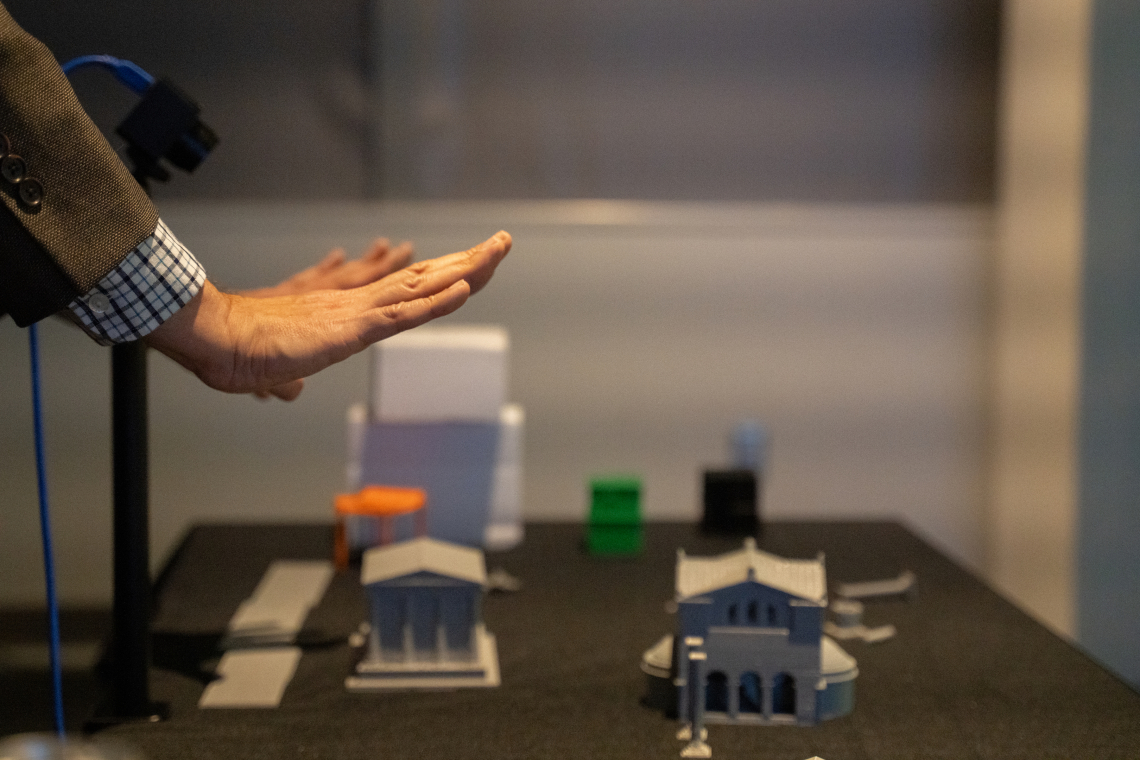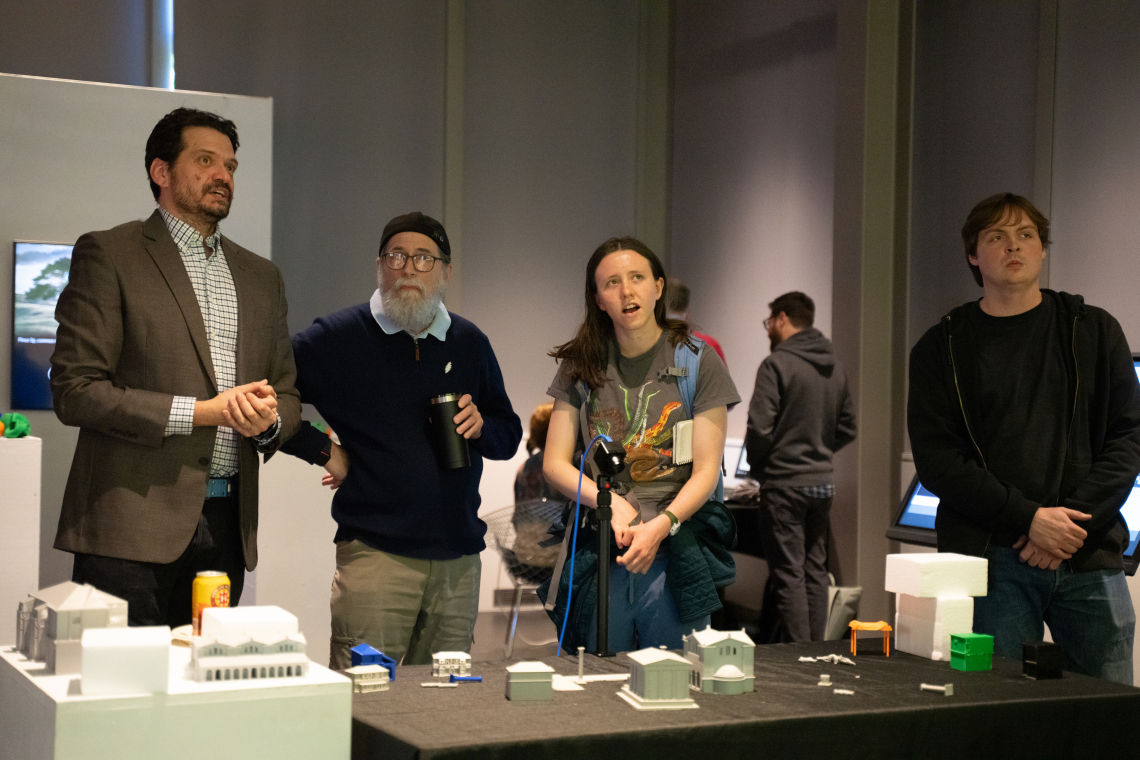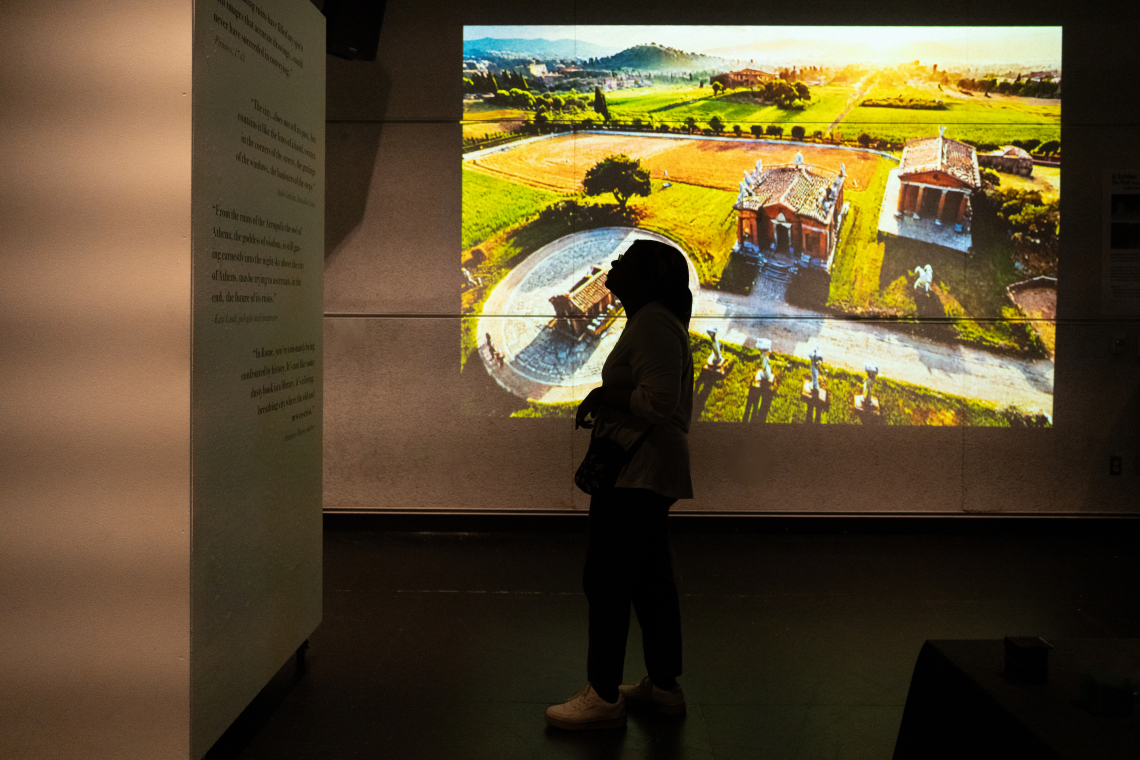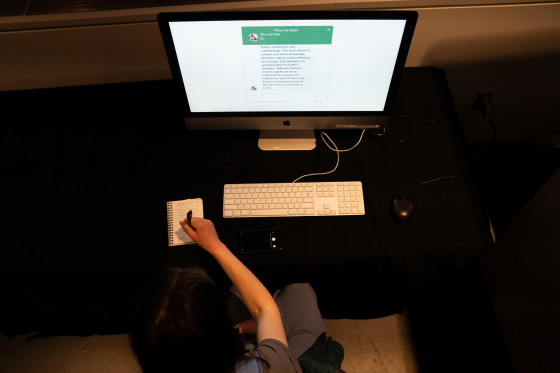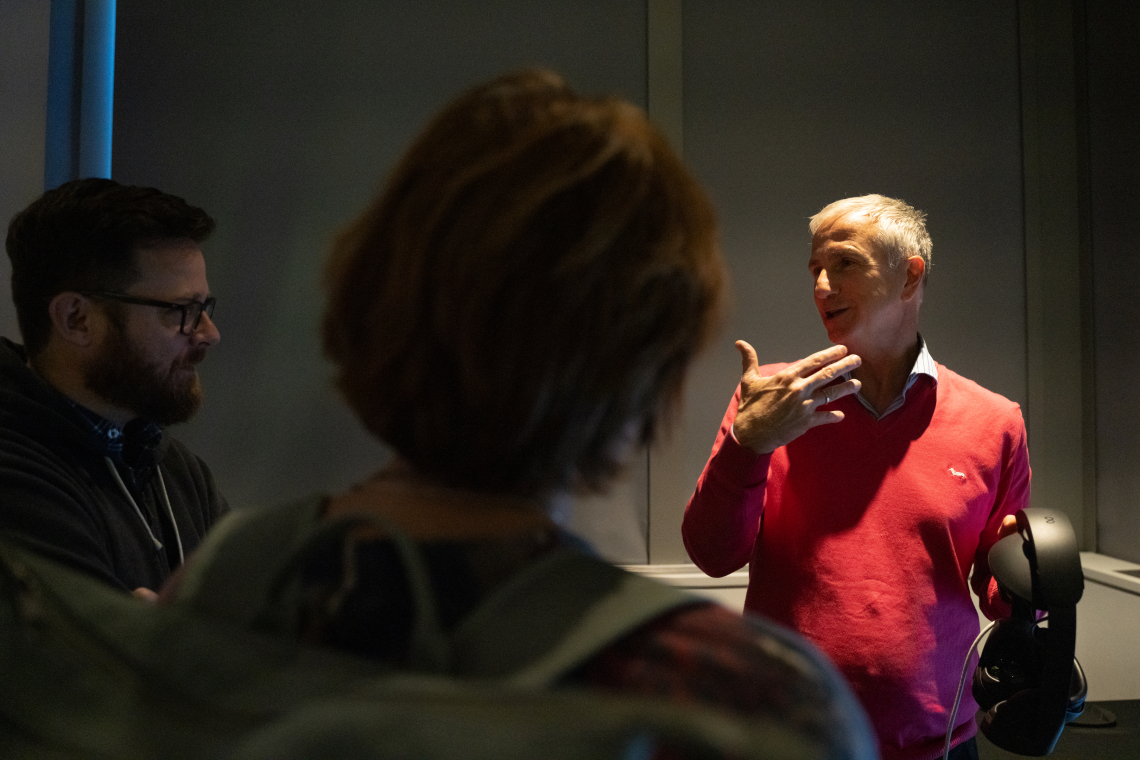In his most recent project, “Rethinking the Past,” Maurizio Forte, William and Sue Gross Distinguished Professor of Classical Studies and Art, Art History, and Visual Studies, decided to flip a traditional research approach on its head.
Forte is director of Duke’s DigLab, an interdisciplinary research unit which creates digital simulations that bring the art and archeology of the ancient world to life. Many of DigLab’s previous project have focused on simulating the structures ancient people built, but not on the land itself where these buildings were constructed.
“In archaeology, we focus a lot on human artifacts, monuments and sites,” said Forte, “and for good reason. But this time, we decided to put the landscape in the foreground and not in the background.”
The exhibit “Rethinking the Past,” currently on display at the Rubenstein Arts Center, uses artificial intelligence to imagine what the physical world of the past might have looked like. Following prompts entered by Forte and his team of collaborators and students— both at Duke and in Italy— the exhibit immerses viewers in the landscapes of ancient Rome and Etruria, covering a 1300 year period from approximately 1000 BCE to 300 CE.
The whole display is interactive, and even includes a Pliny the Elder chatbot programmed in three different languages. The team trained the chatbot using the 37 books Pliny the Elder (ca. 23-79 CE) wrote, giving viewers the opportunity to ask the ancient Roman questions and receive answers based on his understanding of his world.
In June, “Rethinking the Past” is moving to the National Archeological Museum in Paris. Forte hopes that the exhibit will continue to be hosted by partners around the world, since the technology used is easily sent to other universities and museums. “What’s novel about this project is that institutions can adapt it,” said Forte. “We can share the media and the host can decide how to adapt it, based on their local infrastructure.”
Forte believes that producing and sharing an exhibit like “Rethinking the Past” furthers the mission of the Classical Studies Department in significant ways. “It shows that we have important projects in classical archaeology, and not just in terms of scientific articles, publications, websites and books, but also in exhibitions like this.”
“Rethinking the Past” is on display through May 24 in the Agora Gallery, Rubenstein Arts Center, on the Duke University campus. Admission to the exhibit is free. The exhibit was funded by the Gladys Krieble Delmas Foundation, the Office of the Dean of Trinity College and the Trent Fund.

